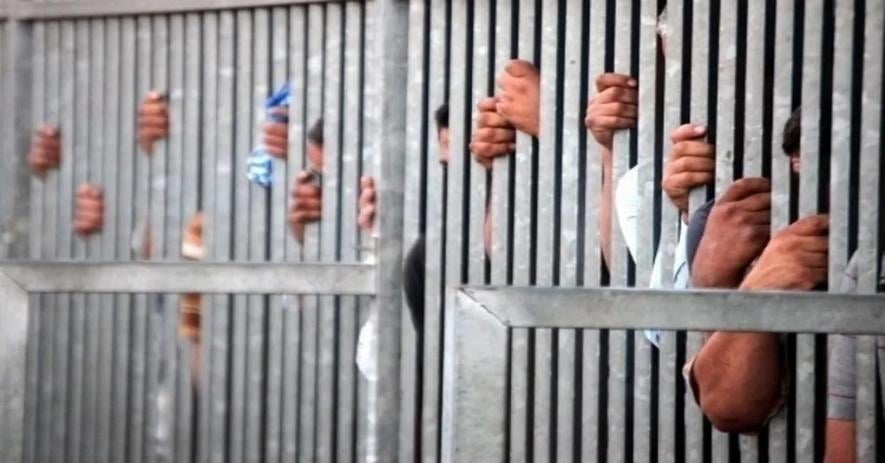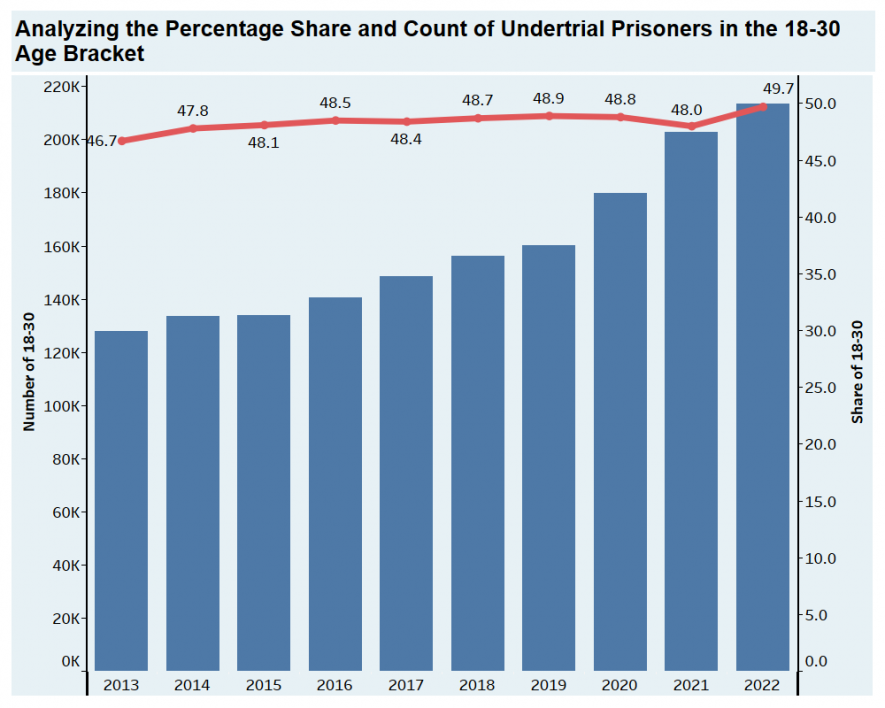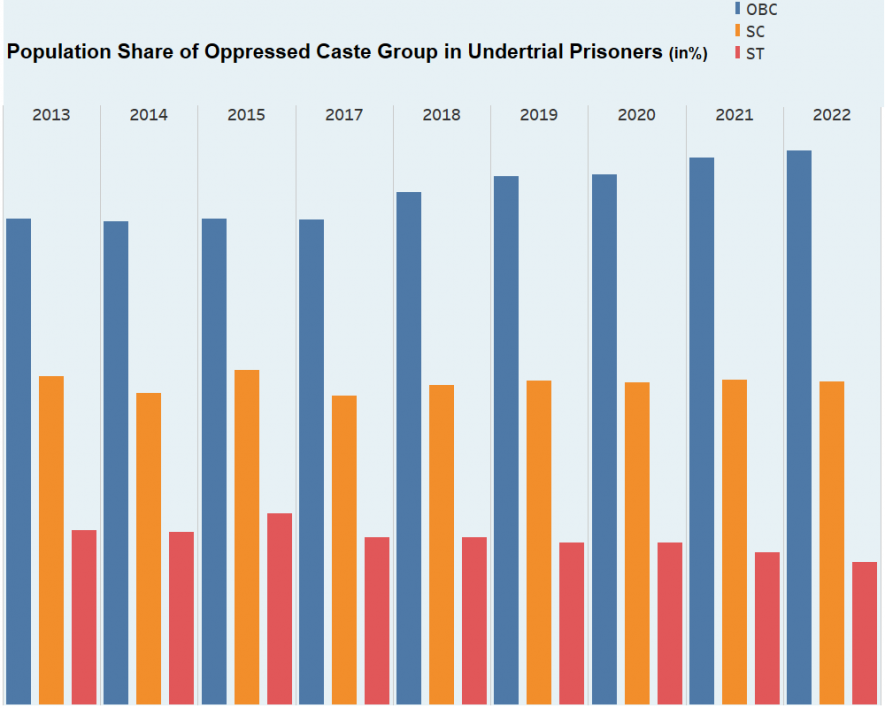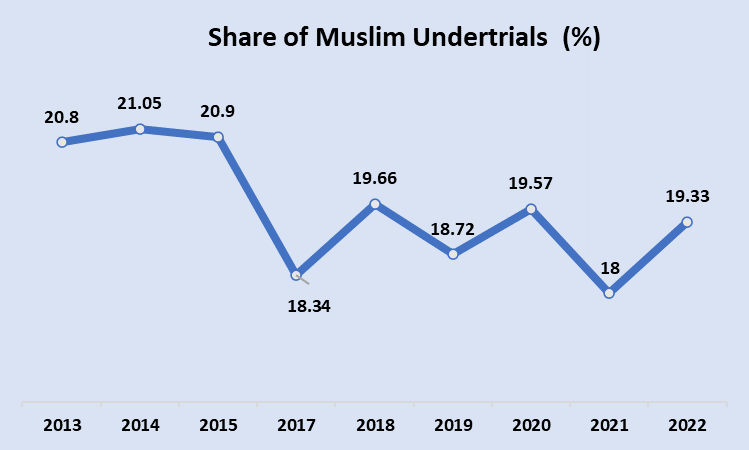Majority of Prison Undertrials Youth, From Oppressed Communities

India had 5,73,220 prisoners in various jails as on 31 December. 2022. Of these, 4,34,302 were undertrials, which translates to 75.08% of the total prison population. Nationwide in 2022, 23.3% of the total prisoners were proven guilty and convicted for their crimes. Among the under-trial prisoners, 52.1% of were detained in district jails, followed by central jails, which had a 35.8% share.
Uttar Pradesh had the highest number of undertrials—94,131 out of 1,21,609 prisoners—followed by Bihar, which confined over 57,000 undertrial prisoners out of over 64,000 prisoners.
On 13 December 2023, Trinamool Congress (TMC) Member of Parliament Saket Gokhale recounted his days as an undertrial in Sabarmati Jail. He wrote on X (formerly Twitter), that a staggering three out of every four prisoners are undertrials. Gokhale’s speech in the Rajya Sabha ought to have reignited the discussion on the persistent incarceration problem in India. However, as usual, it did not.
However, the large undertrial population is a serious and growing concern. There has been an 8.05 percentage point increase in the undertrial population in Indian prisons in a decade. In 2013, undertrials constituted 67.72% of those in prisons across the country.
Data provided by the National Crime Records Bureau (NCRB) reveals that close to half the undertrial prisoner fall in the category of “youth”. Specifically, 49.7% were in the 18 to 30 age group, a big climb up from 46.7% in 2013. This 3 percentage point increase is notable.
The share of young undertrials has persistently increased in a decade, with the singular exception of 2021, when it actually contracted.
The youth have a higher capacity to engage in risky behaviour, which arguably reduces with progressive maturity, but in the eyes of the legal system, turning 18 makes one liable to be treated—and penalised—as an adult.
The lure of crime and criminal activities has been sociologically explained through the lens of maturity, through society’s ability or inability to provide opportunities, and it has to do with access to education and socio-economic backgrounds. The presence or absence of these factors is known to be linked with crime rates.

In 2022, a striking 66% of the undertrial prisoners belonged to marginalised caste groups, comprising Scheduled Castes, Scheduled Tribes, and Other Backward Classes (OBC). This means that 1.3 out of every two undertrials were from these marginalised castes/communities.
The latest NCRB data reveals that 20.94% of undertrials were from a Scheduled Caste, 9.26% belonged to a Scheduled Tribe, and 35.88% were from a socially and educationally backward community. Their respective shares in 2013 were 21.3%, 11.3%, and 31.5%—or close to 64%. Although the share of Scheduled Caste and Scheduled Tribe undertrials has swung up and down, the population of undertrials from the OBC community in Indian prisons has continuously risen.
In 2013, a noteworthy 20.8% of undertrials were Muslim. When the Muslim prison population is added to the already over-represented Scheduled Castes, Scheduled Tribes, and OBCs in prisons, they account for more than 85% of India’s prison population. This phenomenon has rightly drawn the attention of experts.
Prof Vijay Raghavan, Professor at Centre of Criminology and Justice at the Tata Institute of Social Science TISS, told this author that the over-representation of minority communities is a worldwide phenomenon. “Those who are less powerful in terms of the socio-economic strata are the people who are overrepresented in prisons,” says Prof Raghavan.

Prisoners who are not convicted, detenues, or undertrials are categorised as “Others” in Indian prisons. A substantial 51% held under this category were Muslims in 2013. In 2015, India also had the highest share of Muslims as undertrials, at 21.05%. The population of Muslim undertrials has also persistently fluctuated. However, it remained above the community’s proportional share (of roughly 15% according to the 2011 Census), in the Indian population. For the decade from 2013 to 2022, more than one out of every six undertrial prisoners was Muslim. It is noteworthy that in 2018, 58.66% of prisoners who fall under the category of “Others” were Muslims.
Referring to research in the international context, Prof Raghavan says, “There are two reasons which may be leading to this situation. One is the lack of opportunities that people from minority communities face, in terms of access to education, employment, social goods, public welfare schemes, etc. They are likely to get left behind which may push them into illegal occupations and lifestyles. The other reason that researchers show is that there may be bias in the criminal justice system to take action against people from such communities.”

The undertrial population of Muslims, Scheduled Castes, Scheduled Tribes and OBCs has consistently surpassed their proportional share in the overall population. However, seen from the point of view of religious identity, the share of Hindus has fluctuated, decreasing from 69.01% in 2013 to 65.24% in 2022. Members of the Sikh faith constituted 4.67% of undertrial prisoners in 2022, marking an increase from 4.2% in 2013. Conversely, Christians accounted for 2.5% of undertrials in 2022, experiencing a reduction of 2 percentage points from 4.55% in 2013.
The author is an independent journalist. The views are personal.
Get the latest reports & analysis with people's perspective on Protests, movements & deep analytical videos, discussions of the current affairs in your Telegram app. Subscribe to NewsClick's Telegram channel & get Real-Time updates on stories, as they get published on our website.














